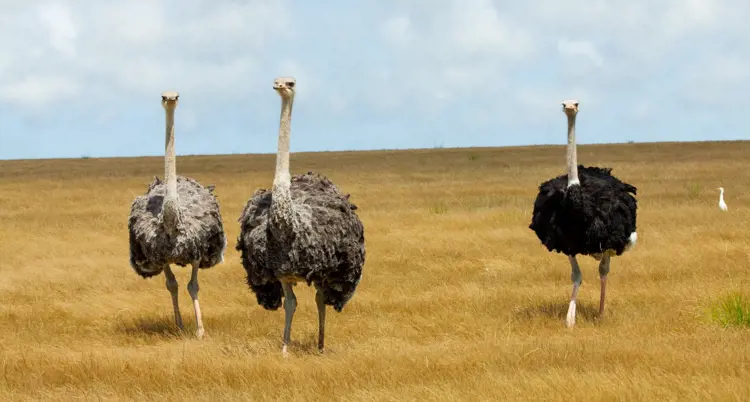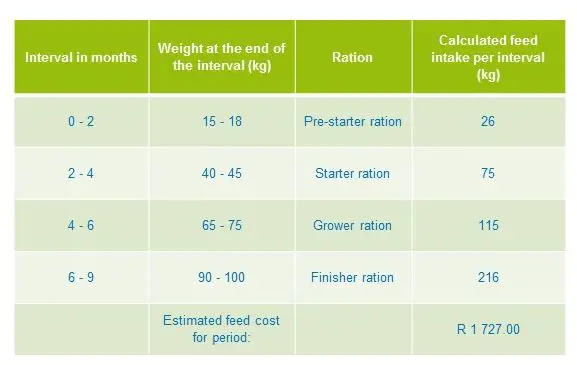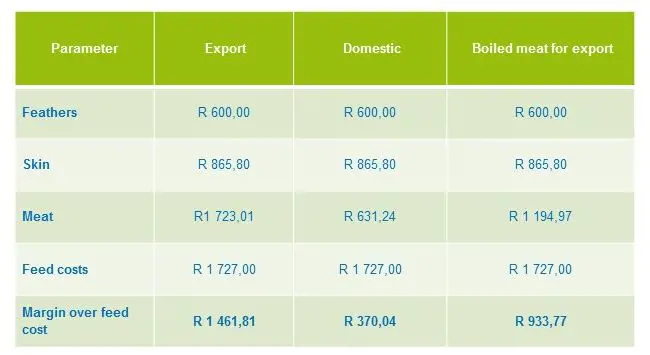
These rising costs for the self-mixing producers means that the purchase of balanced rations has increasingly become an option. The following calculations can help the producer with his decision by calculating the margin over feed costs for the purchase of a balanced ration.
The following guidelines can be used for the feed of purchased balanced rations:
Note that calculations have been made with a 15% confidence interval to allow fluctuations in intake. Chicks average intake is lower, but intake is slightly overestimated for budgeting purposes.
Revenue from an ostrich of 9 months old:
- Skins: The assumption is made that the skins are 130 dm² and second degree with small nodes, the income per skin is: 130 x R6,66 = R865,80
- Feathers: 6 months' income on cleaned feathers: R200,00 and then slaughtered at 9 months: R400,00
- Meat: The assumption is made that the slaughtered weight of the bird is 43 kg and the meat price is R40,07 per kg
- This means: 43 x R40,07 = R1 723,01
However, this picture has changed with the recent outbreak of the avian influenza virus, which resulted in the discontinuation of all exports of fresh ostrich meat. The farmers now have to accept domestic prices that are much lower than export prices. The other option offered by meat processors is to export heat-treated meat, of which prices are slightly better than domestic prices.
- Meat: It is assumed that the birds have a slaughtered weight of 43 kg and the meat is marketed in South Africa, the meat price is R14,68 per kg or if cooked R27.79 per kg.
- This means: 43 kg x R14,68 = R631,24 or for the second scenario 43 kg x R27,79 = R1 194,97
Summary of the three options:
From the above table, it is apparent that it is 3,95 times more profitable from a margin over feed cost point of view of export fresh meat than to market locally. The heat-treated option is the second-best scenario, but there is also a limit to the amount of meat that can be processed in that way.
Since the producer cannot always control his external circumstances or market conditions, this scenario shows that, the ostrich producers can still operate profitably by using balanced rations. If other directly attributable costs are also taken into account, the picture may change. The size of the operation will also play an increasingly important role.
De Heus offers gristing options for the producers who have grains on farm and who would like to buy in feed. Other options for bridging these difficult times include grazing on pastures and supplementing with feed or grains. There must be enough water available to apply this option.
In my opinion there must be coordination between all role players in the industry and a niche market for processed ostrich meat products such as salami, dried sausage and possibly bacon should be investigated, to overcome this problem with exports of fresh meat, to ensure a sustainable future for industry.


